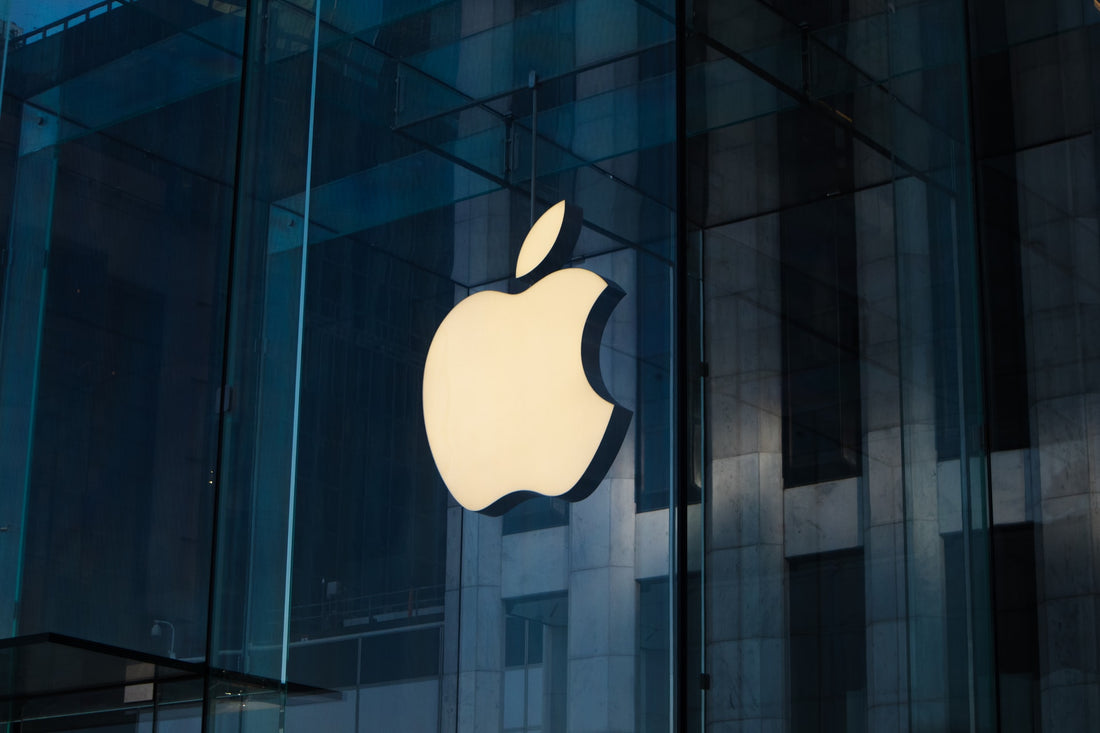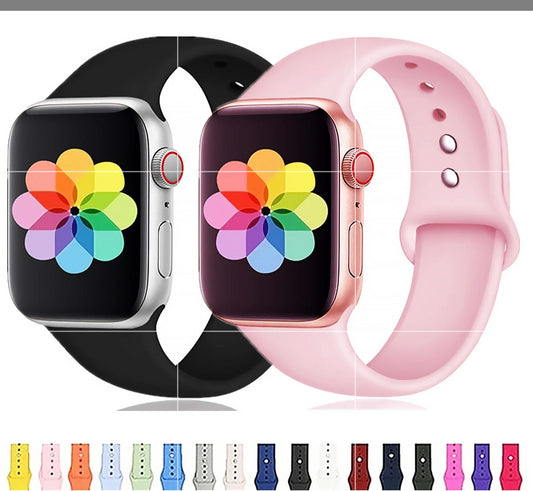Everything You Need to Know About Apple Company vs. Other Companies

Share
Introduction:
In today's rapidly evolving technological landscape, few companies have captured the world's attention like Apple. With its innovative products and unique approach to design, Apple has become a household name. However, understanding Apple's position in relation to other companies is crucial for a comprehensive perspective. In this blog, we will delve into everything you need to know about Apple Company in comparison to its competitors, covering three key aspects: market presence, product lineup, and ecosystem.
I. Market Presence
A. Brand Value and Recognition
Apple's Global Dominance: Apple has achieved unparalleled success and dominance on a global scale. It consistently ranks among the top companies in terms of market capitalization and brand value. The Apple brand resonates with consumers worldwide, reflecting its ability to capture and maintain their loyalty.
Recognizable Brand Identity: Apple's iconic logo, sleek designs, and focus on user-friendly interfaces have contributed to its recognizable brand identity. The company has successfully cultivated a reputation for quality, innovation, and cutting-edge technology, which sets it apart from its competitors.
Impact on Consumer Behavior: Apple's brand image and reputation have a profound influence on consumer behavior. The "Apple effect" is observed in the enthusiasm and loyalty displayed by Apple's customer base, leading to a willingness to pay a premium for Apple products.
B. Market Share and Financial Performance

Apple's Revenue Streams: Apple derives its revenue from a diverse range of products and services, including iPhones, Macs, wearables, services, and accessories. This diversified revenue stream helps mitigate risks and ensures a stable financial position.
Competitor Analysis: While Apple's market share in certain product categories, such as smartphones and personal computers, faces strong competition from other companies, it continues to maintain a significant presence. Competitors like Samsung, Google, and Microsoft provide alternative options for consumers, challenging Apple's market share in various segments.
Growth and Market Expansion Strategies: Apple has pursued several strategies to fuel its growth and expand into new markets. These strategies include geographical expansion, diversification into new product categories (e.g., wearables and services), and strategic partnerships with key players in different industries.
C. Competitive Advantages

Innovation and R&D Investment: Apple's commitment to innovation and substantial investment in research and development (R&D) play a pivotal role in maintaining its competitive edge. Apple's ability to introduce groundbreaking technologies and features has consistently captivated consumers and influenced industry trends.
Supply Chain and Manufacturing Capabilities: Apple has established a highly efficient and sophisticated supply chain, enabling it to control the production process, maintain quality standards, and meet customer demand. Its vertically integrated approach and close collaboration with suppliers contribute to its competitive advantage.
Apple's Marketing and Customer Engagement: Apple's marketing strategies have been instrumental in creating a strong connection with its target audience. The company's advertising campaigns, product launches, and retail store experiences are carefully orchestrated to evoke emotions and engage consumers, fostering brand loyalty and advocacy.
II. Product Lineup
A. iPhones and Smartphones
Apple's Flagship iPhones: iPhones have been the cornerstone of Apple's success, setting industry standards and revolutionizing the smartphone market. Each new iPhone release generates significant anticipation and excitement among consumers.
Comparison with Competing Brands: Apple faces fierce competition from other smartphone manufacturers, such as Samsung, Huawei, and Google. Factors like design, performance, camera capabilities, user experience, and ecosystem integration influence consumer preferences.
User Experience and Operating System: Apple's iOS operating system offers a seamless and intuitive user experience. The integration of hardware and software allows for optimized performance and efficient utilization of device capabilities.
B. Macs and Personal Computers

Mac vs. PC: Apple's Macs, including MacBook laptops and iMac desktop computers, provide an alternative to the traditional PC ecosystem. Macs are known for their sleek design, powerful performance, and user-friendly interface. However, PC manufacturers like Dell, HP, and Lenovo also offer competitive products with broader price ranges and customization options.
Apple's Unique Selling Points: Macs are often favored by professionals in creative fields due to their robust hardware, seamless integration with other Apple devices, and optimized software applications like Final Cut Pro and Logic Pro. The Mac ecosystem offers a unique value proposition to users seeking a cohesive and streamlined experience.
Market Share and Performance Analysis: Apple's market share in the personal computer market has been growing steadily, but it remains smaller compared to PC manufacturers. Nevertheless, Apple's Macs consistently achieve high customer satisfaction ratings and are recognized for their reliability and longevity.
C. Wearables and Services
Apple Watch and Wearable Technology: The Apple Watch has revolutionized the wearables market, becoming the leading smartwatch globally. Its health and fitness tracking features, as well as seamless integration with iPhones and other Apple devices, contribute to its popularity.
Apple's Services: Apple's expansion into services, including Apple Music, Apple TV+, Apple Arcade, and Apple Pay, has diversified its revenue streams and enhanced its ecosystem. These services provide additional value to Apple users and foster customer loyalty.
Integration with Apple Ecosystem: One of Apple's strengths lies in the integration of its products and services within its ecosystem. Wearable devices like the Apple Watch and services like Apple Music seamlessly connect with other Apple devices, creating a unified user experience.
III. Ecosystem
A. Seamless Integration and Interconnectivity
Apple's Closed Ecosystem Approach: Apple adopts a closed ecosystem approach, tightly integrating its hardware, software, and services. This approach ensures a consistent user experience across devices and facilitates seamless data synchronization.
Benefits for Users: Apple's ecosystem offers convenience, ease of use, and a cohesive experience. Users can seamlessly transition between devices, share content, and enjoy cross-device functionality.
Challenges and Limitations: The closed ecosystem approach can limit interoperability with non-Apple devices and services. It may also lead to vendor lock-in, as users heavily invested in the Apple ecosystem may find it challenging to switch to competing platforms.
B. App Store and Developer Community

App Store's Impact on the Market: Apple's App Store has played a significant role in revolutionizing the mobile app market. It offers a vast selection of applications, ranging from productivity tools to entertainment and gaming.
Developer Support and Opportunities: Apple provides a comprehensive set of tools, resources, and guidelines to support app developers. The App Store offers developers a platform to reach a massive user base and monetize their creations, creating a vibrant and competitive developer community.
Comparison with Other App Stores: While Apple's App Store remains the largest app marketplace, competitors like Google Play Store and Amazon Appstore also play significant roles in the mobile app ecosystem. Each platform has its own strengths and areas of focus, attracting different types of developers and users.
C. Privacy and Security
Apple's Stance on User Privacy: Apple has taken a strong stance on user privacy, emphasizing the protection of personal data and providing users with control over their information. Features like App Tracking Transparency and end-to-end encryption contribute to user trust and privacy protection.
Security Features and Encryption: Apple's devices and operating systems incorporate robust security features and encryption measures to protect user data from unauthorized access and cyber threats. This focus on security has positioned Apple as a trusted brand among consumers.
Privacy vs. Competitors: Apple's emphasis on privacy and security differentiates it from some competitors who may adopt different approaches, such as data collection for targeted advertising. This distinction appeals to users who prioritize privacy and data protection.
Conclusion:
Apple's journey to becoming one of the world's most valuable companies has been driven by a combination of market presence, an impressive product lineup, and a well-established ecosystem. By exploring Apple's brand dominance, financial performance, and competitive advantages, we gain insight into the factors behind its success. Additionally, understanding Apple's product lineup, from iPhones to Macs and wearables, allows us to grasp the unique selling points that set Apple apart from its competitors. Finally, diving into Apple's ecosystem reveals the benefits and challenges associated with its closed approach, the impact of the App Store, and the company's emphasis on user privacy and security.
Apple's constant pursuit of innovation and customer satisfaction has enabled it to stand out in the market. As technology continues to advance, it will be fascinating to see how Apple evolves, adapts, and competes with other companies in the dynamic landscape of the future.






